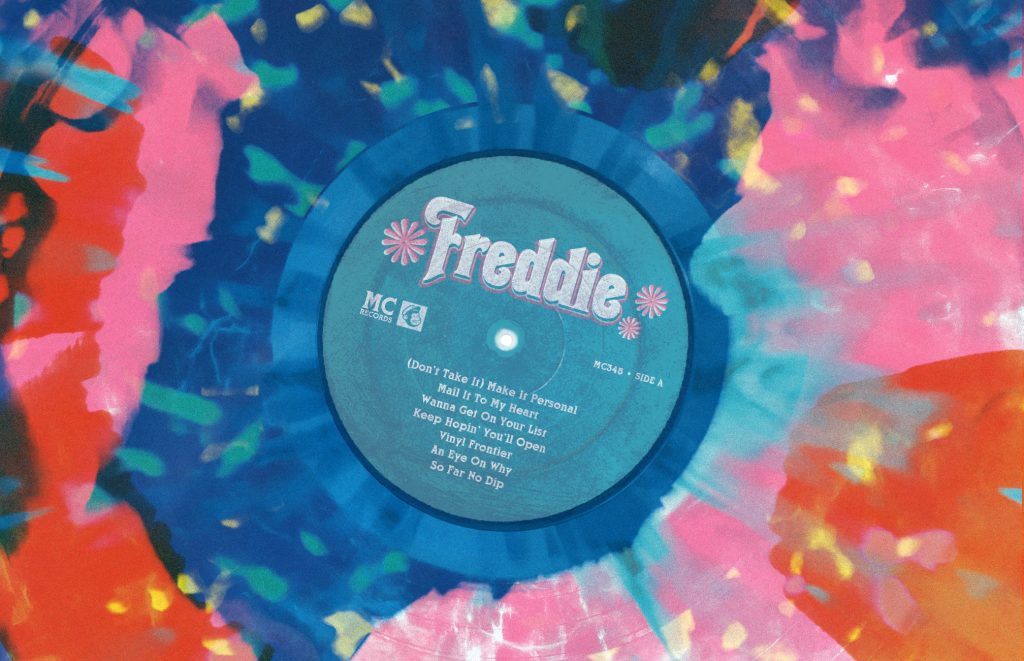A splash of orange, a dash of turquoise. Each month the vinyl colors change, but the concept stays the same: Customers receive one vinyl record at a reasonable price in the mail.
The record club isn’t Secretly Store’s main business. In fact, it was an idea that floated around for a while before the Midwestern family of independent record labels decided to let the list grow organically. It’s a decision that’s led to astronomical open rates that hover around 75% (and higher!) for every newsletter.
“We have this really wonderful opportunity to find this unique way to use what we do—making records and partnering with artists and releasing albums—and connecting that to people in a different way and on a different level,” says Nick Faidley, who works with direct to consumer marketing for the labels, which include Secretly Canadian, Jagjaguwar, Dead Oceans, and the Numero Group.
Secretly Store has 2 monthly newsletters: One for the main online store, and one for the Secretly Society record club. Both yield enviably high open rates between 50 and 85%—significant numbers when compared to the music industry’s average open rate of about 16%.
Here are 3 ways they did it:
1. Make it personal
With the resurgence of vinyl, there are plenty of record clubs available. In fact, the last time that album sales were so high was nearly 30 years ago, when Nintendo and tube socks reigned, according to the Recording Industry Association of America.
So what makes Secretly Society stand out?
For starters, the tone feels like a friend is emailing you about the latest cool record that they just happened to come across and thought you should hear. Each newsletter highlights that month’s release, what it sounds like, and why you might love it. (You also get one opportunity to skip a record and select another if it doesn’t sound like your jam.)
“When we’re writing copy and thinking about how we want to engage with people on the newsletter, we prioritize things that are going to invite people back rather than maybe trying to monetize this one other thing or trying to push this specific product,” Nick says.
They tend to think of it as less of a sales feature, he says, and more like a chance to be informative and connect with consumers, “because people are paying to be in a record club that we want to feel special.” In other words, it’s music fans connecting with music fans, a relationship that’s invariably personal.
“We can’t just write a really gross, stiff, bare-bones newsletter because that’s not what we do. And that’s even maybe more so than just a branding thing: It’s a disservice to the artists that we work with.”
2. Figure out the “why”
Nick says newsletters have experienced a monumental shift since the late 1990s and early 2000s. Back in the day, the idea was to get as many email addresses as you could—and get content in front of as many people as possible.
Today, though, we’re presented with a barrage of content from social media and advertising across a variety of platforms, he says. And if you want to cut through the noise, you have to figure out why you’re sending an email in the first place.
For the Secretly Store and Secretly Society, it’s certainly to sell records and other merchandise, but it’s also to forge a sense of trust. “We do it because it’s a longer form way to connect with a specific group of people on our terms and on their terms,” Nick says.
“We just want to let you know what’s going on, and you love music, and we love music, and we can keep this civil and conversational,” he says. “And coming at it from that perspective has been really helpful and given us a directive for how we should talk to people and what we should talk about.”
3. Watch what draws people in
“When you create things that people have an artistic and an emotional reaction to, you don’t get to define which part of that rings a bell for each person,” Nick says. “We just have to be open to what people are gravitating toward and to what people are interested in.”
The record club has experimented with different types of content like polls and Q&As with artists, as well as discounts and promotional codes for specific items or free shipping, which Nick was initially concerned would be too “sales-y” and cause a dip in the open rate. But they’re not a prominent feature of the newsletters. Instead, they’re discreet, which makes finding them all the more rewarding. And so far, no dip.
Another incredibly popular feature has been getting Secretly members into concerts for free—and the occasional announcement of an extremely limited item.
“We’re not trying to develop a rabid competitive fan base. That’s not really what we’re about,” Nick says. “But having that as another tool to connect with our members has been really positive.”
Some members are casual fans, but others are also musicians with rich histories.
“Everyone has a connection on a deeper level to what we’re doing, and so I try and write these for people who might be new to it or who might have something that’s really important to them about this that I don’t even know about,” Nick says. “We let that audience come to us.”

